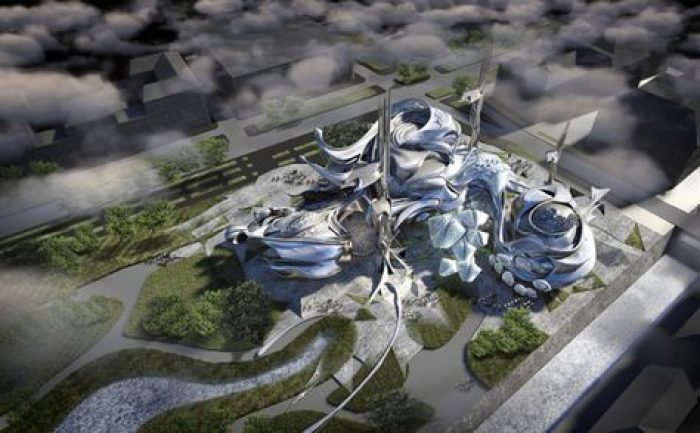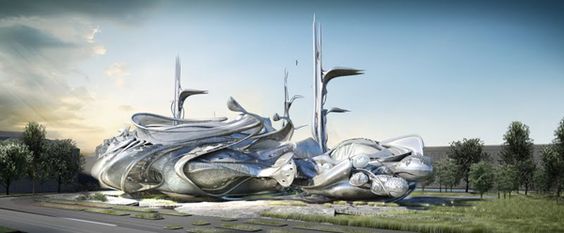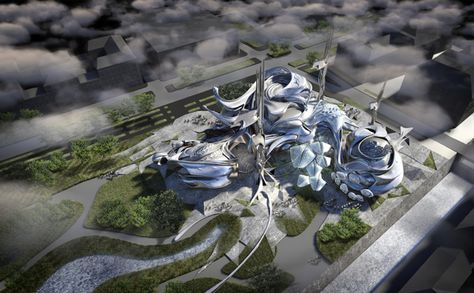New Romanticism Concert Hall | Philip H. Wilck
The Romantic Period allowed artists the freedom of expression of their feelings through the use of spontaneous imagination. Rational systems and artificial rules were considered heinous because they limited the purity of the artists’ emotions. It sought for untamed inspiration and originality with obscure perceptions, stepping outside the boundaries of what should be expected, while also retaining a balance and intimate relationship with nature. With this design proposal Philip H. Wilck introduces a New Romanticism that combines a strong emotional aesthetic experience with concrete geometrical and material configurations, bringing new life to a classic era.
The elaborately creative structure conducts the feeling of awe and amazement with its unique gestures and fluid movements. The bizarre and captivating concert hall echoes the architects’ ideas for a multilayered and complex music experience. Outside of the sensual qualities of the space a system of centrally positioned classical symmetric concert hall geometry and specifications were put in place. Some of the elements of the building include two areas created as sound shells inspired by biological shell geometries (biomimicry) and spaces for an energy self-sufficient structure utilizing host interaction and active materials. Even though the key elements associated with Romanticism are contradictory to the absolutistic building systems and configurations the architect introduces into his design, the combination provides a new outlook on creative expression that embarks on rethinking traditional architectural concepts.
New Romanticism Concert Hall | Philip H. Wilck
New Romanticism Concert Hall | Philip H. Wilck
New Romanticism Concert Hall | Philip H. Wilck






